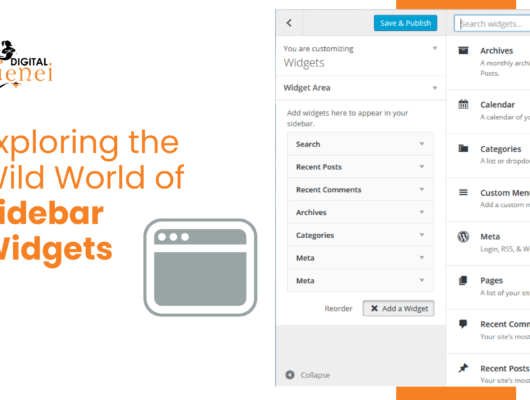In the digital era dominated by smart devices, the way we access information has undergone a paradigm shift. Mobile devices, ranging from smartphones to tablets, have become the primary gateways to the online world. As web developers, it’s imperative to embrace this mobile revolution and adapt our strategies accordingly. This Mobile Manifesto outlines key principles to navigate the dynamic landscape of mobile web development and ensure that digital experiences seamlessly translate across various screens.
Mobile-First Philosophy: The Foundation of Success
Start with mobile in mind; let it be the cornerstone of your development strategy.
Rationale: With a growing majority of users accessing the web via mobile devices, adopting a mobile-first approach ensures that your website is optimized for the smallest screens first. This philosophy promotes a focus on essential content and functionality, providing a streamlined experience that scales elegantly to larger devices.
Responsive Design: Crafting Universally Accessible Experiences
Embrace responsive design as the universal language of the web.
Responsive design ensures that your website adapts seamlessly to various screen sizes and orientations. By employing flexible grids and media queries, you create a consistent and user-friendly experience, eliminating the need for separate designs for desktop and mobile devices.
Performance Optimization: Speed is Non-Negotiable
Prioritize speed as a core feature, not an afterthought.
Mobile users are on the move and demand instant access to information. Optimize images, leverage browser caching, and minimize server response times to create a lightning-fast user experience. Speed not only enhances user satisfaction but is also a crucial factor in search engine rankings.

Touch-Friendly Navigation: Intuitive Gestures for Intuitive Experiences
Design navigation with taps and swipes in mind; make it a touch-friendly journey.
The traditional mouse and keyboard are replaced by taps, swipes, and gestures on mobile devices. Create intuitive navigation that considers the ergonomic aspects of touch input, ensuring users can effortlessly navigate through your content.
Progressive Web Apps (PWAs): The Marriage of Web and App Experiences
Strive for the seamless blend of web and app experiences through Progressive Web Apps.
PWAs combine the best of both worlds, providing the reliability of web technologies with the engagement of native apps. Implement service workers for offline functionality, push notifications, and an app-like interface, fostering user engagement and satisfaction.
Mobile-Optimized Content: Tailoring for the On-the-Go Audience
Optimize content for mobile consumption; brevity is your ally.
Mobile users often seek quick information while on the go. Tailor your content to be concise, scannable, and engaging. Prioritize essential information, and consider progressive disclosure to keep users engaged without overwhelming them.
Device Compatibility: From Smartphones to Tablets and Beyond
Ensure compatibility across a spectrum of smart devices; your web experience should transcend screens.
Smartphones, tablets, and an array of smart devices vary in screen sizes and resolutions. Adopt a device-agnostic mindset to create a consistent experience regardless of the device. Test thoroughly to guarantee compatibility across the diverse ecosystem of smart devices.
Accessibility as a Priority: Inclusivity in the Digital Realm
Uphold accessibility standards; ensure everyone can access and enjoy your digital offerings.
Accessibility is a fundamental principle. Implement proper semantic HTML, provide alternative text for images, and ensure that your website is navigable using screen readers. Prioritizing accessibility not only expands your audience but aligns with ethical and legal considerations.

Continuous Testing: The Assurance of Quality
Embrace continuous testing across devices; quality is non-negotiable.
The diversity of devices and browsers demands ongoing testing. Implement a robust testing strategy that covers various devices, browsers, and operating systems. Automated testing tools and real device testing can uncover issues early in the development process.
Security Vigilance: Safeguarding User Trust
Uphold the highest standards of security; user trust is paramount.
Mobile users share sensitive information on the go. Implement HTTPS, safeguard against cross-site scripting (XSS) and cross-site request forgery (CSRF) attacks, and stay vigilant against emerging security threats. Prioritize user privacy and data protection.
Conclusion: Navigating the Mobile Frontier
The Mobile Manifesto serves as a guiding light for web developers navigating the ever-evolving landscape shaped by smart devices. By embracing a mobile-first philosophy, prioritizing responsive design, optimizing performance, designing touch-friendly interfaces, leveraging PWAs, tailoring content for mobile consumption, ensuring device compatibility, upholding accessibility standards, embracing continuous testing, and prioritizing security, developers can create digital experiences that resonate across the diverse ecosystem of smart devices.
As stewards of the digital realm, adherence to this Mobile Manifesto is not just a best practice; it’s a commitment to delivering excellence in the mobile era, where every tap and swipe opens a world of possibilities.
Keywords: mobile web development, responsive design, performance optimization, touch-friendly navigation, Progressive Web Apps (PWAs), mobile-optimized content, device compatibility, accessibility, continuous testing, security.





